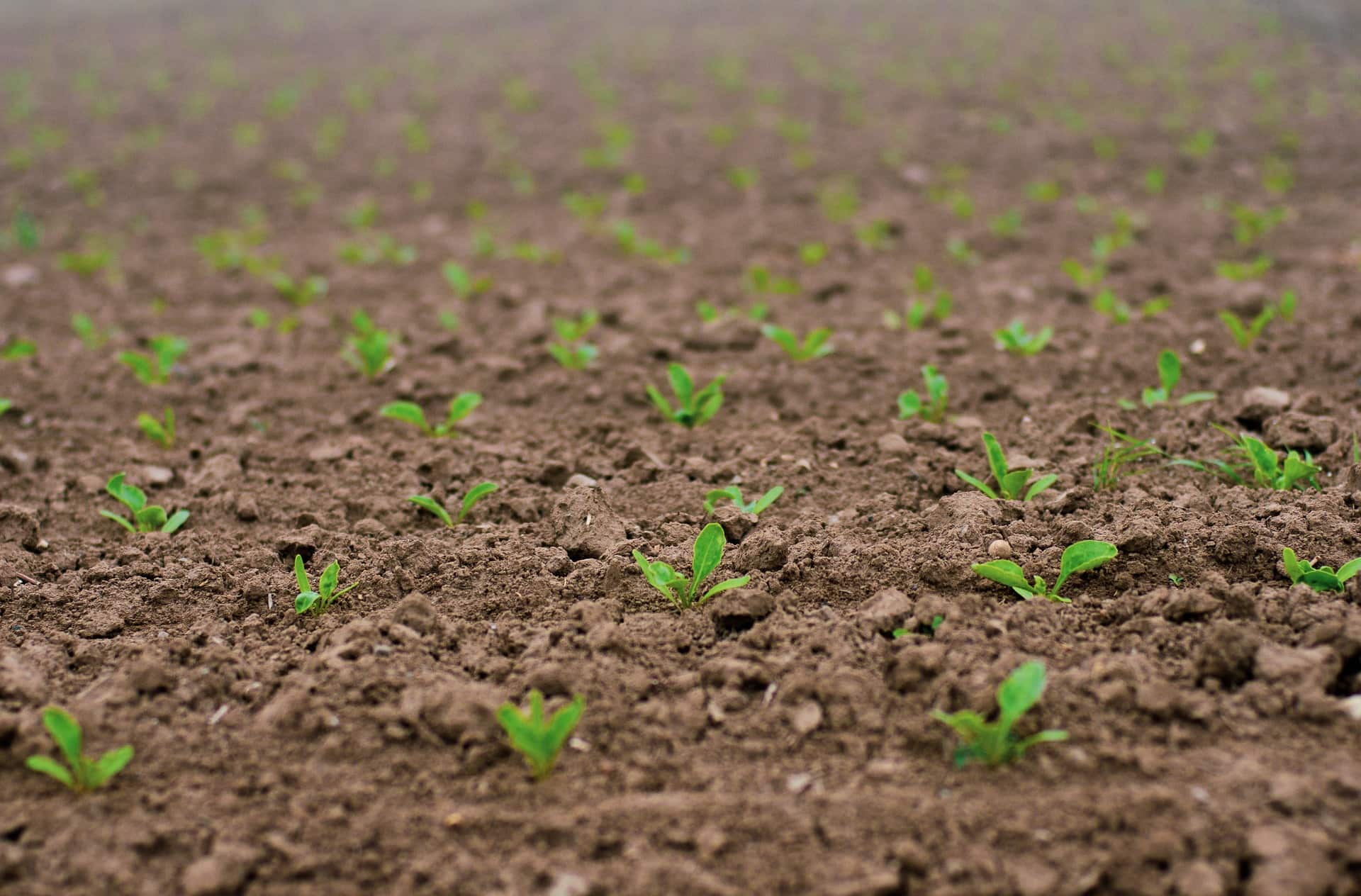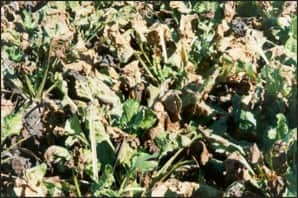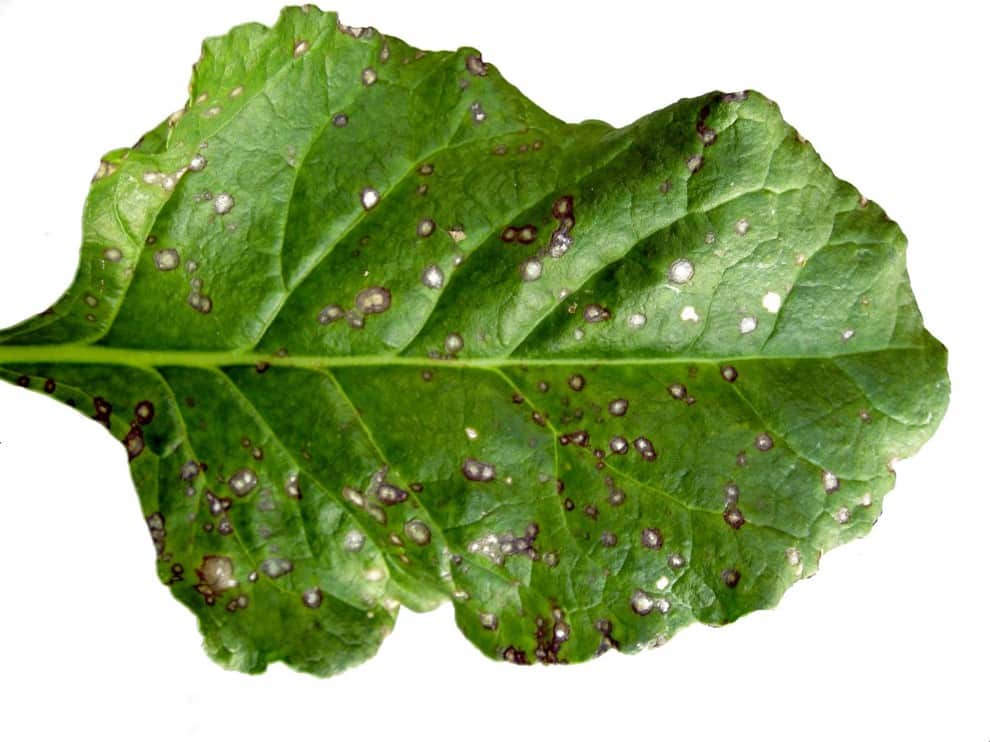FarmQA is Tapping to the (Sugar) Beet. Click here for some grower tips for a hit sugar beet season.

While spring in the upper Midwest has presented its share of challenges, sugar beets are off to a good start for most coop growers. Growth has been particularly good in south central Minnesota and the southern Red River Valley where planting was completed in April or early May. Not surprisingly, it’s those frost-damaged fields with lower plant populations that will present the greatest challenges to maximize yield and quality.
Preserving plant population is paramount
While I prefer to see 200 plants per 100 foot of row, stands at a minimum of 175 plants per 100 foot or more should deliver excellent yield and quality. If very high stands were achieved in fields with April or the first 15 days of May plantings, plant populations of 225 or more plants per 100 foot of row should easily reach harvestable size sometime in August. Fields planted in April or the first two weeks of May with 75-100 plants per 100 foot of 22-inch row width should not be replanted. Sugar beets are known for their ability to adapt when thin stands occur, and the early planting will most likely compensate for the emergence issues. Stored soil water is excellent throughout Minnesota and North Dakota, so even if rainfall is somewhat below average this summer, I expect beet growth to maintain.
Disease risk management and decision-making play a big part
For sugar beet growers in the upper Midwest, two of the most prevalent diseases they face are Rhizoctonia and Cercospora. But there are some decisions and considerations growers can make to help mitigate the damage these diseases can cause.
Rhizoctonia – Greatest concerns

Rhizoctonia solani is the most serious disease sugar beets face in our region. It is not a serious problem in the seedling stage, but it progresses throughout the growing season and losses of yield and quality can be very great. It loves all weather conditions and can develop in cool or hot, wet or dry environments. A comprehensive approach is necessary for control to be successful, including the following risk factors.
Rhizoctonia risk factors:
- Fields with serious Rhizoctonia history
- Varieties with little or no resistance
- Late-planted fields
- Four-inch soil temperatures above 65 °F
Field history
Rhizoctonia is present in virtually every field to some degree. Management of the disease should be field-specific. Past field history records can be a great help in making decisions on fungicide applications. Remember seed treatment protection only lasts about four weeks. If the field has a history of rhizoctonia, hopefully a variety with better resistance was planted. If a good variety was planted, consider at least one POST-emergence fungicide application at about the 4-6 leaf stage. If a variety with poorer resistance was planted, two POST-emergence fungicide applications should be considered. Consider applications at the 4- and 8-10-leaf stage.
Varieties
Plants first show signs of varietal resistance at about four weeks old. If an in-furrow fungicide treatment was used with a variety with very good resistance, then it’s likely no further treatment is required. In-furrow azoxystrobin active ingredient containing products like Azteroid will give 8 weeks or more Rhizoctonia control. If the variety chosen has poor resistance and no in-furrow treatment, then a fungicide applied POST emergence should be considered at both the 4 and 8-10 leaf stage.
When in doubt about disease identification, the Northwest Research and Outreach Center (NWROC) of the University of Minnesota located at Crookston will provide identification at no cost. Unfortunately, after planting, there are no control options available for Aphanomyces or Fusarium root rot problems.
Late-planted fields and soil temperature
Rhizoctonia starts to affect plants when soil temperatures reach 65 °F. With late-planted fields, you’ll almost always be at that temperature threshold. If you’re planting late and the soil has reached that temperature, consider applying a fungicide no later than the 4-leaf stage.
Cercospora leaf spot management

Cercospora leaf spot is one of the most serious and destructive diseases sugar beet growers face. Yield and quality losses of 15-25% or more can be caused by Cercospora.
Cercospora risk factors:
- Field history
- Length of crop rotation
- Planting date
- Varietal resistance
Field history
Just like Rhizoctonia, field history is also important in managing Cercospora. If a field had a high incidence of Cercospora and it was planted only three years ago, it will have greater inoculum and be at greater risk for a problem this year.
Rotation length
Fields in three-year rotations will be at greater risk of severe Cercospora problems than fields in longer rotations.
Planting date
Early planted fields should be scouted carefully starting about 75 days after planting. Expect Cercospora to be observed approximately 90 days after planting. Of course, you should scout areas of greatest risk first, along trees, borders with infected fields last year, other sheltered areas.

Varietal Resistance
Varietal resistance is a key management tool. Scout varieties with less resistance first and more carefully. Varieties with about one-point lower rating, often have delayed first incidence of disease and may well require one less fungicide application as well.
Weed Control
Weed Control must be emphasized as well. Of greatest concern is where glyphosate-resistant waterhemp and kochia are present. Use of at-plant or layby soil-applied herbicides that are effective on these weeds is critical. This will be especially important on fields with poor plant populations due to poor establishment or loss of plants due to frost.
Experts are here to help
Always remember to involve available experts to come to the best consensus decision possible to help ensure the best outcome for your fields. Sugar company agronomists, or other experts can be of great help.




